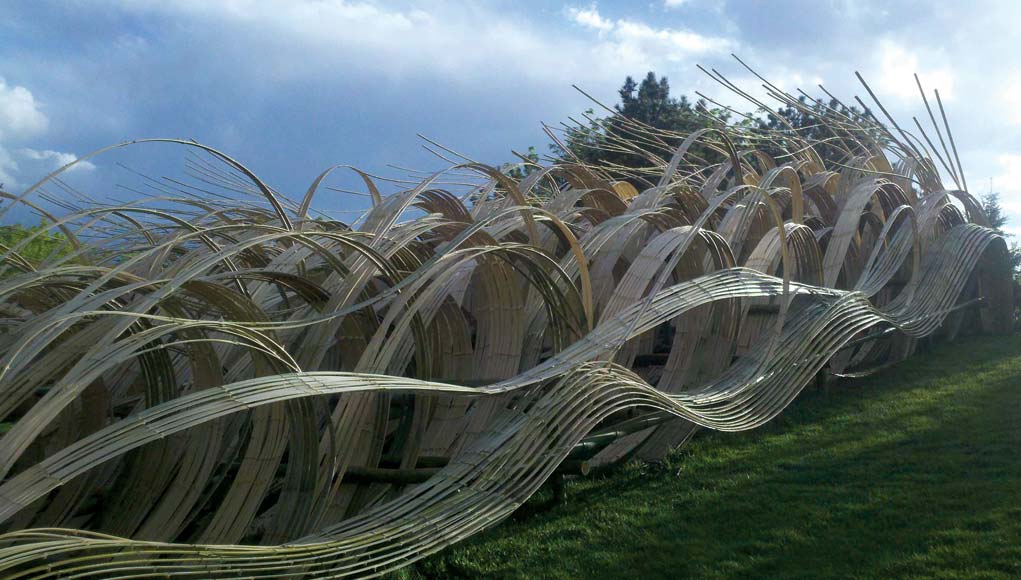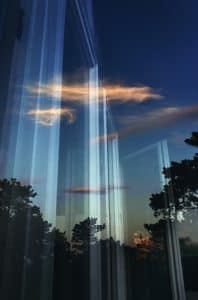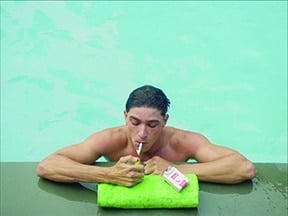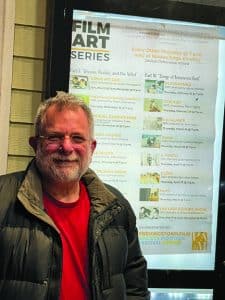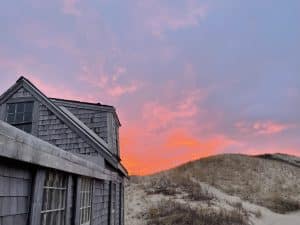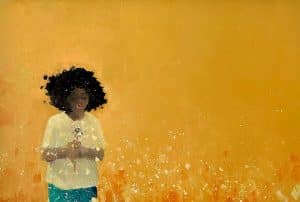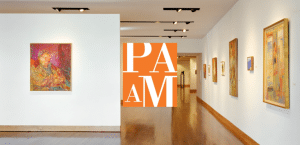by Lee Roscoe
Traditionally, ikebana is known as the ancient Japanese art of flower arrangement; in some eras lavish, in some striving for simplicity; always trying to essentialize the universal in nature. But ikebana master Tetsunori Kawana says it is much more than petal perfection—it is a combination of a spiritual and artistic way, a way which he wants to popularize, enabling local artists to create in place, not just flower microcosms, but even the large bamboo installations for which Kawana is known, and which have revolutionized his art.
In five days of sold-out classes at Truro Center for the Arts at Castle Hill, Tetsu (his nickname) will teach “the methods and not the style” of floral ikebana, “not the form; so with the student’s own eye they can create art for themselves.” He cautions that “the material is light. You need a sensitive hand and sensitive eye, otherwise you can’t create.” In sometimes imperfect, sometimes clear English he elaborates, “Each flower has a face, like human being.” He wants to “change students’ viewpoints” to see which is more beautiful, and how the way you put the flower in the vase best reveals the beauty.
His students will also witness a Kawana installation that will then be open to the public, created with two helpers in collaboration with Salvatore Fiumara, who will hang some of his paintings in harmony with the spatial/temporal gestalt of the installation.
When Kawana installs, his goals are to connect the local place’s nature and its people through his art, so to originate a work, he takes time to discover that place, its nature, and people, “otherwise the work will not come from the heart.”
More metaphysically, Kawana speaks of fusing time and place with materials, of taking in the energy of the universe and expressing it in art, of connecting communities to that energy. He calls it the Three Cs: creativity, connection, communication.
Creating his art is a matter of learning “how to face nature, how to touch natural material”— as he has done for 45 years. When you feel the spiritual connection to the material, then energy infuses the artist and the art.
Kawana is very impressed with the Cape, its pine trees, and “sand land” that hearkens back to his mentor, Hiroshi Teshigahara, ikebana grand master (son of the founder of one of the most famous schools of that art, Sogetsu)—and his teacher of 20 years (also a famous filmmaker who directed Woman in the Dunes (1964).)
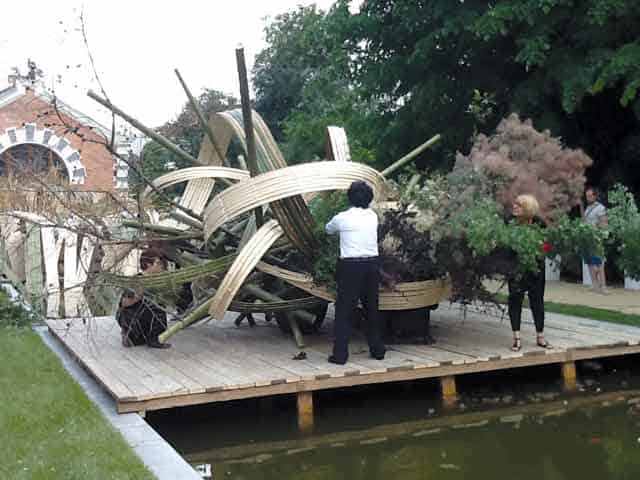
While walking in, inhaling, touching the Cape’s nature, the sight of fallen pines going back to earth, decaying, immediately gave the master the vision for the installation he will create at Castle Hill: Reincarnation. About six feet in diameter, drawings show interwoven branches entwined with red thread, representing veins and blood. Elements of red rise up because in reincarnation there is ascension, a rising to heaven, and “in a story in Buddhism, when one high priest died, his fingers were tied with red string.” The whole should express the ties between sky and earth, the cycle of life. It should induce in the viewer a sense of “infinity, peace, harmony, and unity.”
The Cape installation is smaller than usual, and will be indoors in a small space, which will accentuate the limits of mortality inherent in the piece’s theme.
Kawana’s huge installations are mostly created outdoors so that they and the people who experience them can interact with “air, wind, earth,” as well as with the artwork. Usually he uses helpers, 20 or 30 volunteers. It is important that the local community—his volunteers as well as the art’s viewers—connect with each other. By using local volunteers, community is connected to art and to the place, and the art, in turn, connects place to people. The energy of locality will infuse creation. The creation will inspire the community that sees it.
Usually Kawana uses green bamboo, which is ecologically sustainable because it grows quickly. (Japanese use bamboo for cloth, tools, furniture, and the creation of small, aesthetically pleasing artifacts, but large installations of it were originated in part by Teshigahara.) In Truro, Kawana will only use found objects and not cut down any pines because, he says, unlike bamboo, it takes a long time for a tree to mature, and he “respects and adores” this too much to cut a tree out from life.
This art is not immortally housed in museums. This doesn’t bother him at all, for it is the experience of the art itself which he seeks. “My own life title is passage.” It is his way to go through life, by touching the life force in his material and creating with it. “Nature changes day by day, so does the human being; so does that which is created by a human.” The doing of it is his road. The art is a way to understand life.
Kawana himself is transient, has no studio, but he goes where he is invited to create art, and lives there for a time. He’s taught and installed all over the world: Moscow, New York, Denver, Japan, and now Truro.
The thing that lasts forever, he says, “is the feeling or memory” from interacting with the piece itself, whether by viewing it or helping in its assemblage.
He talks about how his pieces have affected people, one in particular. In Sweden he was asked to create a piece in a bad neighborhood that would perhaps change the perception of people there, bring a new energy. Indeed, it did. Children joyfully explored it, playing, bicycling through it. Then a Bhutoh dancer (a Japanese dance form created to purge the experiences of Hiroshima and Nagasaki) said, “I can feel the spaces. I want to dance in here.” He took energy from the circle of unity and infinity that the piece comprised, and danced. Photos show an ethereal vitality creating a ritual of its own against the backdrop. “This is real public art,” says Kawana.
“In Buddhism the world comes out of the five senses,” the master explains. Ikebana should engage at least some of them. Also a dictum of the art is use of the five elements: earth, air, wind, sky, fire, water. Water is a big influence for Kawana. One piece comes at you like flames of oceanic waves roiled by wind from the sky (with order in the chaos); one is like waterfalls; one seems like birds caught in wind in trees. Seeing a Kawana piece will enhance your vision—to discern shapes and spaces with new eyes. You will appreciate the specifics of the natural world more sharply.
His plans for the future as he ages? “Who knows if I will be here?” But if so, he wants to teach, to pass on the information of how to do his art, so local artists can create in place ikebana installations to illuminate earth and soul.
Ikebana master Tetsunori Kawana’s workshop at Truro Center for the Arts at Castle Hill is sold-out, but he will give a talk about his art at Wellfleet Preservation Hall, 335 Main St., on Tuesday, August 13, 6 – 8 p.m. For more information or tickets ($10–$20) for the lecture call Castle Hill at 508.349.7511 or visit castlehill.org.

